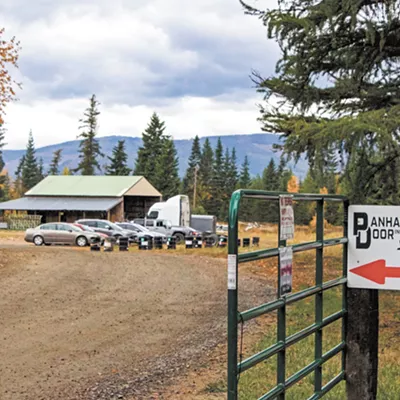
Solar panels are one of those candy-like concepts for greenie technophiles: the meeting of science, human ingenuity and conservation. But considering their cost, it’s unlikely that many homeowners will be able to open their wallets and let the solar panels shine.
“A solar project costs at least … $12,000 to $15,000,” says Luke Tolley, lead organizer at SustainableWorks, a local nonprofit that focuses on energy efficiency.
And even if you shell out all that money, each individual house, given its orientation to the sun, will see a different set of benefits.
Even new, energy-efficient windows can be a gamble. “[People] just get something in their head or they find out from somebody this is the most important thing you can do for your home, and it’s rarely the case,” he adds.
Before embarking on a quest for a more eco-legit living situation, Tolley recommends getting a home-energy audit. SustainableWorks and Avista both offer the service, which assesses buildings for weaknesses.
After all, a house isn’t a sealed bunker with a stray bay window or two. Well-placed insulation or a high-efficiency furnace may have just as much impact as a fancy solar array.
“Much like the human body, a home is a system, and you can’t just treat one thing — you really have to look at it as a whole,” he says. “If your attic is leaking [air] like a sieve, if your walls are leaking, you know . . . windows are not going to make that big of an impact.”
SustainableWorks’ energy assessment is conducted over three or four hours. Experts enter a home and focus on four areas: the heating system, hot water system, insulation and weatherization.
Much of the testing is an exercise in thermography — “using an infrared gun and shooting walls and ceilings and floors to figure out where heat may be escaping,” Tolley says.
Then there’s the blower door test — a pressure rig that tests how tight doors are.
“You can literally walk around windows and doors … and see where there’s air flowing,” he says.
The assessment also tests oil and natural-gas heating furnaces for safety and efficiency.
“There’s so much of an instant savings in money and in energy by switching to a high-efficiency natural gas system over an oil boiler,” he says.
In pinpointing where energy leaves a house, Tolley says, homeowners can then set a strategy for long-term efficiency.
“Sometimes it’s a phased thing, where they’re going to spend a few hundred dollars a year, on insulation this year, on a new window the next year, on a hot water heater,” he says.
The upgrades make a difference. In the past 18 months, about 255 tons of carbon have been saved from energy-efficient retrofits through SustainableWorks, Tolley says. That’s the weight of two fully loaded Boeing 757s.
Avista, too, conducts energy audits, according to Joe Brabeck, a program manager with the company. They also audit home appliances like refrigerators, and they have a home-energy-advisor survey on their website.
Both companies also give zero- or low-interest loans to help homeowners undertake retrofits. It may sound counterintuitive, but it’s better for the company’s bottom line if people use less energy, Brabeck says.
“If we can recover energy at less cost than it costs to buy it, or build a new power plant,” it’s a win for Avista, he says. “And it costs less to promote energy efficiency than to go out and buy additional energy.”





















